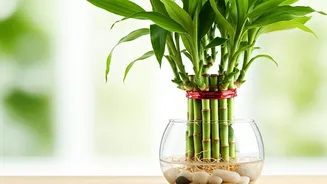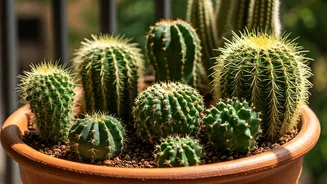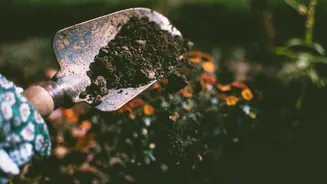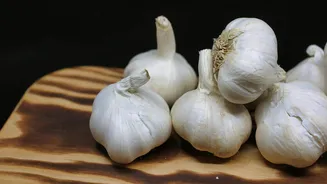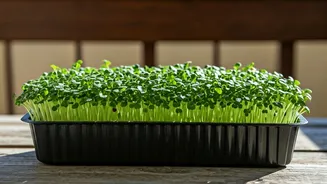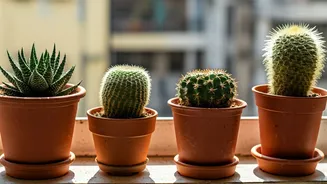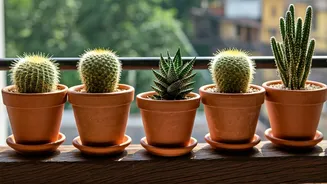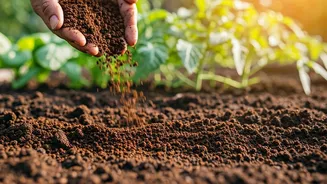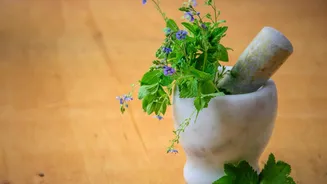Incorrect Lighting Conditions
One significant mistake is providing improper light. Lucky Bamboo thrives in indirect or filtered light. Direct sunlight can scorch the leaves, causing
them to turn yellow or brown. Avoid placing the plant in direct sunlight, such as near a south-facing window. Instead, position it in a location where it receives bright, but indirect, light. If you notice the plant's stems becoming elongated and the leaves are sparse, it might not be receiving enough light. Consider moving it to a brighter spot or using a grow light to supplement the lighting. Monitoring your plant and adjusting its location as needed is crucial for its health and vitality.
Watering Mistakes to Avoid
Watering is crucial, and improper watering is a common cause of Lucky Bamboo problems. Using tap water that contains chlorine or fluoride can harm the plant over time. It is best to use filtered, distilled, or rainwater. Overwatering can lead to root rot, which is deadly to the plant. Allow the top inch of the soil to dry out before watering again. Underwatering, on the other hand, can cause the leaves to turn yellow and droop. Ensure the plant receives adequate moisture, but avoid waterlogging the soil. A good rule of thumb is to water when the soil feels slightly dry to the touch, generally every 1-2 weeks depending on the environment. Regularly observe the plant for any signs of distress related to watering issues.
Wrong Soil Selection
The correct soil is vital for the health of your Lucky Bamboo. While it can grow in water alone, it thrives in well-draining soil. Standard potting soil can often retain too much moisture, leading to root rot. The ideal soil mix should allow for good drainage while retaining enough moisture for the plant. A mix of peat moss, perlite, and vermiculite is suitable. This combination provides the necessary nutrients and aeration for the roots. When repotting your Lucky Bamboo, ensure the new pot has drainage holes to prevent water accumulation. This also helps in keeping the roots healthy, preventing conditions conducive to fungal or bacterial issues. Careful attention to soil composition and drainage ensures the long-term well-being of the plant.
Ignoring Temperature Needs
Lucky Bamboo plants prefer a specific temperature range, and failing to meet these needs is a significant oversight. They do best in temperatures between 65°F to 90°F (18°C to 32°C). Avoid placing the plant near drafts, air conditioning vents, or heating sources, as these can cause fluctuations in temperature and affect the plant's health. Extreme temperatures, either hot or cold, can cause the leaves to yellow, the stems to become soft, or even kill the plant. Consider the plant’s environment and take steps to maintain a steady temperature. If you live in an area with extreme weather conditions, be mindful of where you place the plant inside your home. Protect it from sudden temperature changes to ensure its healthy growth and vitality.
Neglecting Fertilization Needs
While Lucky Bamboo isn't a heavy feeder, neglecting to fertilize can lead to nutrient deficiencies, which can stunt the growth of the plant. If you choose to fertilize, use a balanced, water-soluble fertilizer diluted to half the recommended strength. Over-fertilizing can lead to a buildup of salts in the soil, which can be detrimental to the plant. Apply fertilizer sparingly, typically once a month during the growing season (spring and summer). Observe the plant for signs of nutrient deficiencies, such as yellowing leaves or stunted growth. If such signs appear, adjusting the fertilization schedule might be necessary. Avoid fertilizing during the dormant period (fall and winter) to prevent over-fertilization.
Ignoring Pest Infestations
Like any houseplant, Lucky Bamboo can fall prey to pests, which, if left untreated, can severely damage the plant. Common pests include spider mites, mealybugs, and aphids. Regularly inspect the plant for any signs of infestation, such as small webs, sticky residue, or visible insects. If you identify pests, act promptly. You can use insecticidal soap, neem oil, or other appropriate treatments. Isolate the affected plant to prevent the spread to other plants. Clean the plant’s leaves with a damp cloth to remove any pests. By monitoring and quickly reacting to any issues, you can prevent pests from causing serious harm and keep your plant healthy. Regular checks ensure your plant’s well-being and longevity.
Incorrect Potting Practices
Improper potting can affect your Lucky Bamboo's ability to thrive. Ensure that the pot has adequate drainage holes. Without proper drainage, excess water can accumulate, leading to root rot. When repotting, choose a pot slightly larger than the previous one, giving the roots enough space to grow without being overcrowded. Avoid using pots that are too large, as the excess soil can retain too much moisture. When repotting, gently remove the plant from its current pot, carefully inspect the roots, and trim any that are damaged or diseased. Using fresh, well-draining soil and a pot with suitable drainage holes will maintain the overall health of your plant.
Ignoring Pruning Requirements
Lucky Bamboo benefits from regular pruning, and neglecting this aspect can hinder its growth and appearance. Pruning not only helps maintain the shape of the plant, but it also stimulates new growth. Use clean, sharp scissors or pruning shears to remove any yellow or damaged leaves. You can also trim the stems to encourage new shoots and control the plant's height. When pruning, make sure to cut just above a node, which is the area where the leaves or new stems emerge. Regular pruning keeps the plant looking neat, and allows the plant to focus its energy on healthy, new growth. By adopting this practice, the plant will appear visually appealing and retain its vitality.
